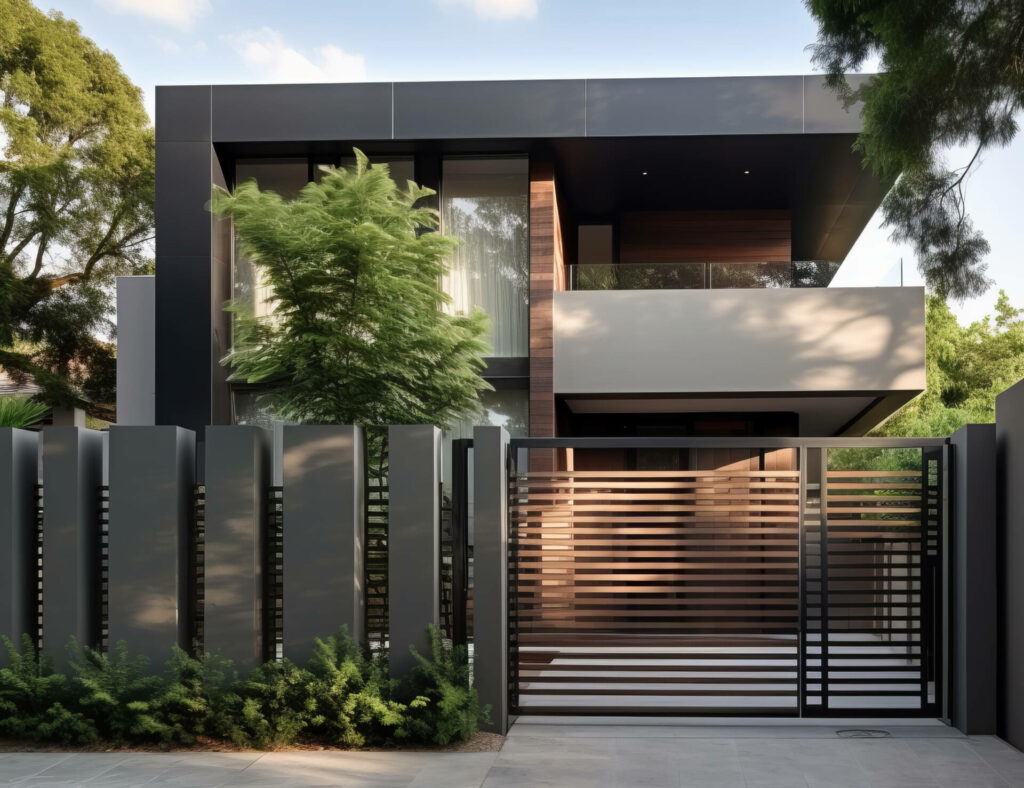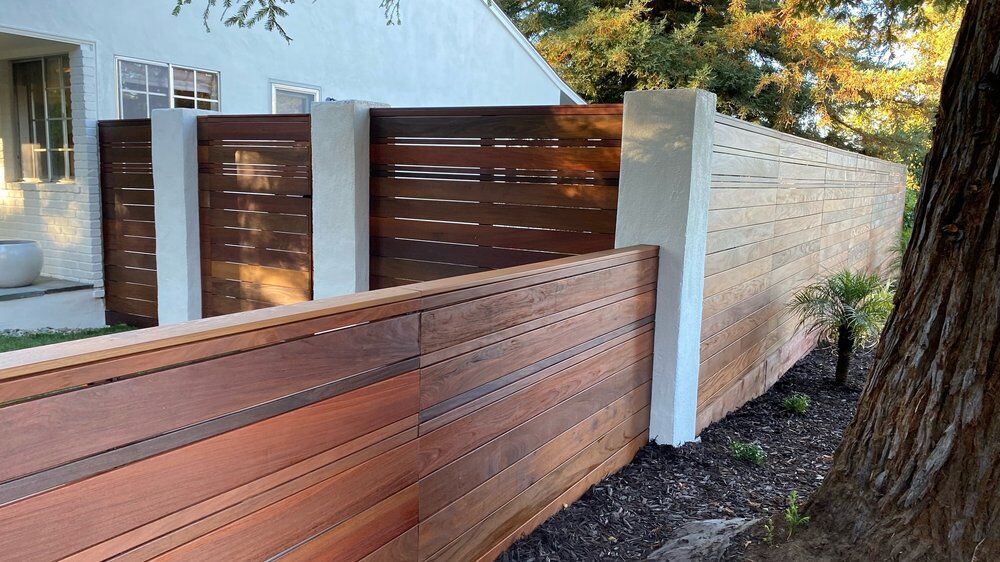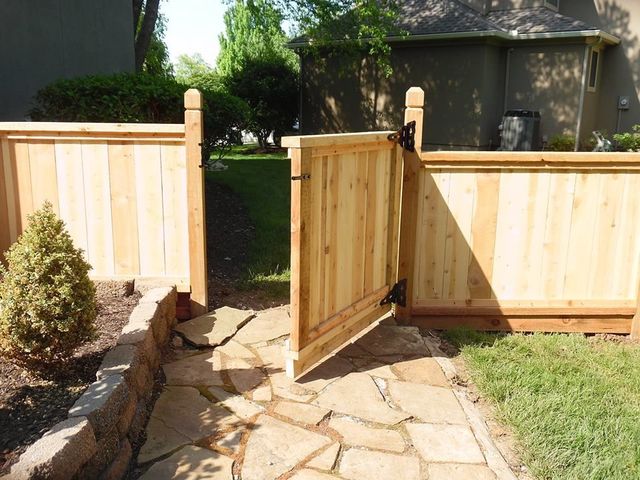All Categories
Featured
Choosing the best sort of fencing for your residential property is a choice that needs thoughtful factor to consider of numerous variables, from the material and design to its purpose and upkeep requirements. A fence not only offers functional features such as security and personal privacy however can likewise enhance the aesthetic charm of your home. With a variety of products readily available, it's vital to understand what works best for your specific needs.
![]()
Personal privacy: If your objective is to obstruct out the view from neighbors or passersby, you'll want a solid fencing without any gaps. Products like composite, vinyl, and wood are popular selections for personal privacy fencings. They offer the essential protection to ensure a private yard or yard space. Protection: For keeping intruders out or protecting kids and pets, you'll require a solid, tall fence. Metal fencings such as steel, aluminum, or chain web link offer great longevity and are challenging to climb up. These products are also ideal for creating a safe boundary around your residential or commercial property. Aesthetic Allure: If the purpose of your fencing is extra attractive than functional, you might choose a picket fence, functioned iron, or a split rail fencing. These alternatives provide an attractive border without offering total personal privacy. 2. Consider Your Spending plan. Your spending plan will play an essential duty in your choice. Various materials featured differing price points, so it is very important to think about exactly how much you agree to spend. Right here are some general guidelines:
Wood Fencing: One of the most economical options, wood fencings can be customized and mounted conveniently, though they call for maintenance to stop rot and warping. Regular staining or painting is needed to maintain its appearance and sturdiness. Plastic Fencing: While plastic is extra expensive ahead of time than timber, it's a low-maintenance option. Plastic fences do not require painting, discoloration, or securing, and they are immune to decay, fading, and insects. They can be vulnerable to splitting in severe cold temperature levels. Chain Link Fence: If your major concern is keeping costs low, wire mesh fence are the most affordable choice. While they do not use much in terms of privacy, they're functional for safeguarding animals and noting residential or commercial property limits. Metal Fencing (Light Weight Aluminum or Steel): Steel fences are durable, long-lasting, and basically maintenance-free. While they can be costlier than wood or chain link, they provide added safety and security and a streamlined, contemporary look. 3. Resilience and Upkeep Needs. Consider the long-term resilience of your fencing and just how much time and effort you want to purchase upkeep:
![]()
Timber: While timber offers a natural look, it needs normal maintenance, including tarnishing and securing, to secure it from the elements. Timber fencings can last 10-15 years with appropriate upkeep. Vinyl: Vinyl fences are low-maintenance and are extremely long lasting. They won't rot, warp, or discolor gradually. As soon as set up, you can anticipate a vinyl fence to last for a number of years with very little treatment. Metal: Aluminum and steel fencings are very long lasting and require little to no maintenance. Aluminum won't corrosion, and steel can be treated with a protective coating to stop corrosion. Both options can stand up to rough climate condition and are ideal for long-lasting use. Chain Link: Although chain web link fences are resilient and sturdy, they might require periodic fixings, specifically if the galvanized coating begins to subside. They can corrosion over time, though contemporary finishings like vinyl are readily available to expand the life-span. 4. Variable in Aesthetic Allure. The style and design of the fence should complement the style of your residential property. Take into consideration the overall aesthetic you wish to achieve:
Conventional Residences: For more traditional, typical homes, a wood or wrought iron fence could be the most effective fit. These products use a timeless allure and can be tailored to match the style of your home. Modern or Contemporary Residences: If you have a modern-day home, you might intend to pick smooth, minimalistic products like light weight aluminum or plastic. These fencings supply a clean appearance and can be tailored with various colors or surfaces. Ranch or Country Settings: For bigger residential properties or rural settings, split-rail or ranch-style fencings can offer a genuine appearance and are suitable for defining residential property borders while still enabling an open sight. 5. Environment Considerations. The environment in your region plays an important duty in figuring out the most effective material for your fencing. Timber might warp or rot unless dealt with appropriately if you live in an area with high moisture or hefty rainfall. Vinyl and steel choices, nevertheless, do well in many environments and are less prone to damage brought on by moisture.
![]()
Conclusion. Picking the right fence for your residential property depends on recognizing your demands, spending plan, and individual choices. Whether you're focusing on personal privacy, protection, aesthetic appeals, or reduced upkeep, there is a variety of choices readily available. By considering the product, sturdiness, and design of your fence, you can make sure that it improves the feature and appearance of your home for several years to find.

- Analyze the Purpose of the Fence. The first step in selecting the suitable fencing is recognizing its key feature. The kind of fencing you choose will certainly depend on what you intend to attain:
Personal privacy: If your objective is to obstruct out the view from neighbors or passersby, you'll want a solid fencing without any gaps. Products like composite, vinyl, and wood are popular selections for personal privacy fencings. They offer the essential protection to ensure a private yard or yard space. Protection: For keeping intruders out or protecting kids and pets, you'll require a solid, tall fence. Metal fencings such as steel, aluminum, or chain web link offer great longevity and are challenging to climb up. These products are also ideal for creating a safe boundary around your residential or commercial property. Aesthetic Allure: If the purpose of your fencing is extra attractive than functional, you might choose a picket fence, functioned iron, or a split rail fencing. These alternatives provide an attractive border without offering total personal privacy. 2. Consider Your Spending plan. Your spending plan will play an essential duty in your choice. Various materials featured differing price points, so it is very important to think about exactly how much you agree to spend. Right here are some general guidelines:
Wood Fencing: One of the most economical options, wood fencings can be customized and mounted conveniently, though they call for maintenance to stop rot and warping. Regular staining or painting is needed to maintain its appearance and sturdiness. Plastic Fencing: While plastic is extra expensive ahead of time than timber, it's a low-maintenance option. Plastic fences do not require painting, discoloration, or securing, and they are immune to decay, fading, and insects. They can be vulnerable to splitting in severe cold temperature levels. Chain Link Fence: If your major concern is keeping costs low, wire mesh fence are the most affordable choice. While they do not use much in terms of privacy, they're functional for safeguarding animals and noting residential or commercial property limits. Metal Fencing (Light Weight Aluminum or Steel): Steel fences are durable, long-lasting, and basically maintenance-free. While they can be costlier than wood or chain link, they provide added safety and security and a streamlined, contemporary look. 3. Resilience and Upkeep Needs. Consider the long-term resilience of your fencing and just how much time and effort you want to purchase upkeep:

Timber: While timber offers a natural look, it needs normal maintenance, including tarnishing and securing, to secure it from the elements. Timber fencings can last 10-15 years with appropriate upkeep. Vinyl: Vinyl fences are low-maintenance and are extremely long lasting. They won't rot, warp, or discolor gradually. As soon as set up, you can anticipate a vinyl fence to last for a number of years with very little treatment. Metal: Aluminum and steel fencings are very long lasting and require little to no maintenance. Aluminum won't corrosion, and steel can be treated with a protective coating to stop corrosion. Both options can stand up to rough climate condition and are ideal for long-lasting use. Chain Link: Although chain web link fences are resilient and sturdy, they might require periodic fixings, specifically if the galvanized coating begins to subside. They can corrosion over time, though contemporary finishings like vinyl are readily available to expand the life-span. 4. Variable in Aesthetic Allure. The style and design of the fence should complement the style of your residential property. Take into consideration the overall aesthetic you wish to achieve:
Conventional Residences: For more traditional, typical homes, a wood or wrought iron fence could be the most effective fit. These products use a timeless allure and can be tailored to match the style of your home. Modern or Contemporary Residences: If you have a modern-day home, you might intend to pick smooth, minimalistic products like light weight aluminum or plastic. These fencings supply a clean appearance and can be tailored with various colors or surfaces. Ranch or Country Settings: For bigger residential properties or rural settings, split-rail or ranch-style fencings can offer a genuine appearance and are suitable for defining residential property borders while still enabling an open sight. 5. Environment Considerations. The environment in your region plays an important duty in figuring out the most effective material for your fencing. Timber might warp or rot unless dealt with appropriately if you live in an area with high moisture or hefty rainfall. Vinyl and steel choices, nevertheless, do well in many environments and are less prone to damage brought on by moisture.

- Regional Rules and HOA Standards. Before finalizing your fence selection, ensure to check with your regional community or home owners association (HOA) for any constraints regarding fence elevation, materials, or layout. Many locations have certain rules in area, and it is necessary to conform to stay clear of possible fines or having to tear down the fencing.
Conclusion. Picking the right fence for your residential property depends on recognizing your demands, spending plan, and individual choices. Whether you're focusing on personal privacy, protection, aesthetic appeals, or reduced upkeep, there is a variety of choices readily available. By considering the product, sturdiness, and design of your fence, you can make sure that it improves the feature and appearance of your home for several years to find.
Latest Posts
Uncover Strathmere’s Coastal Treasure: Enjoy, Dine, and Unwind at Deauville Inn
Published May 15, 25
2 min read
The Benefits of Consistent Auto Maintenance at Montclare Auto Repair Saves You Money
Published May 15, 25
1 min read
Join Your Financial Partner at WyHy – Comprehensive Support for Your Future
Published May 15, 25
1 min read
More
Latest Posts
Uncover Strathmere’s Coastal Treasure: Enjoy, Dine, and Unwind at Deauville Inn
Published May 15, 25
2 min read
The Benefits of Consistent Auto Maintenance at Montclare Auto Repair Saves You Money
Published May 15, 25
1 min read
Join Your Financial Partner at WyHy – Comprehensive Support for Your Future
Published May 15, 25
1 min read